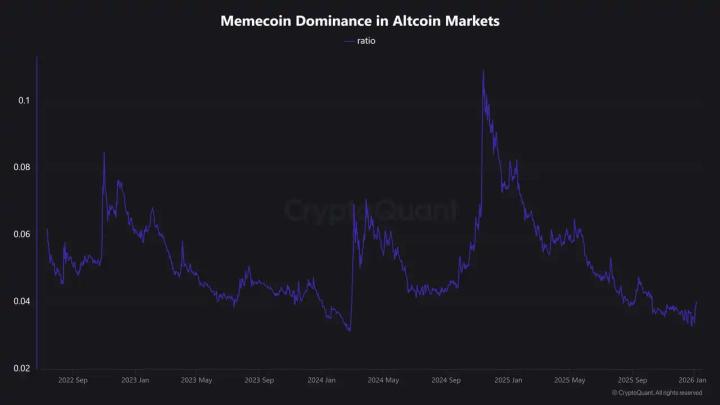Written by: duoduo, LD Capital
Kaspa is a POW public chain built on the GHOSTDAG protocol. Compared with Bitcoin, Kaspa mainly changes the structural model of the blockchain. Bitcoin uses a single chain structure, and GHOSTDAG uses a directed acyclic graph (DAG) structure, in which one block can point to multiple blocks.
The token KAS will be launched in November 2021, with a total supply of 28.7 billion, a current circulation of 19.8 billion, accounting for 69% of the total, a market value of 750 million US dollars, and a FDV of 1.08 billion US dollars. Since the token was launched, it has increased by a hundred times.
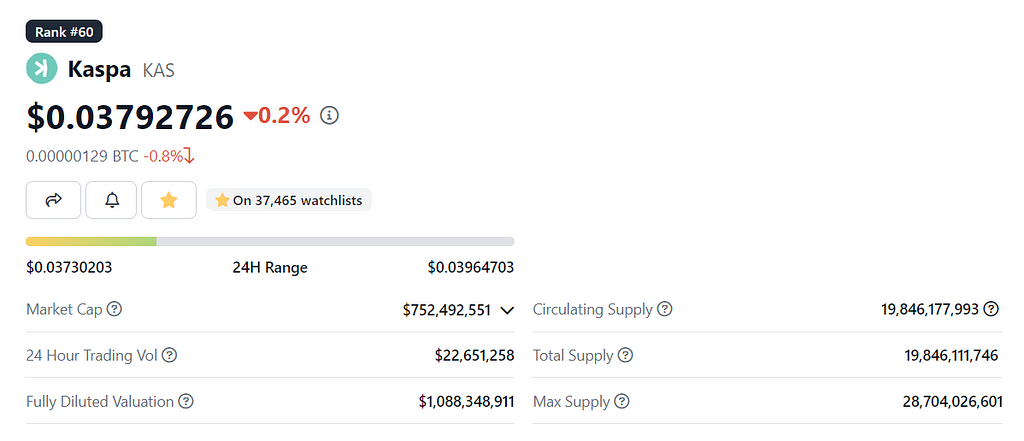
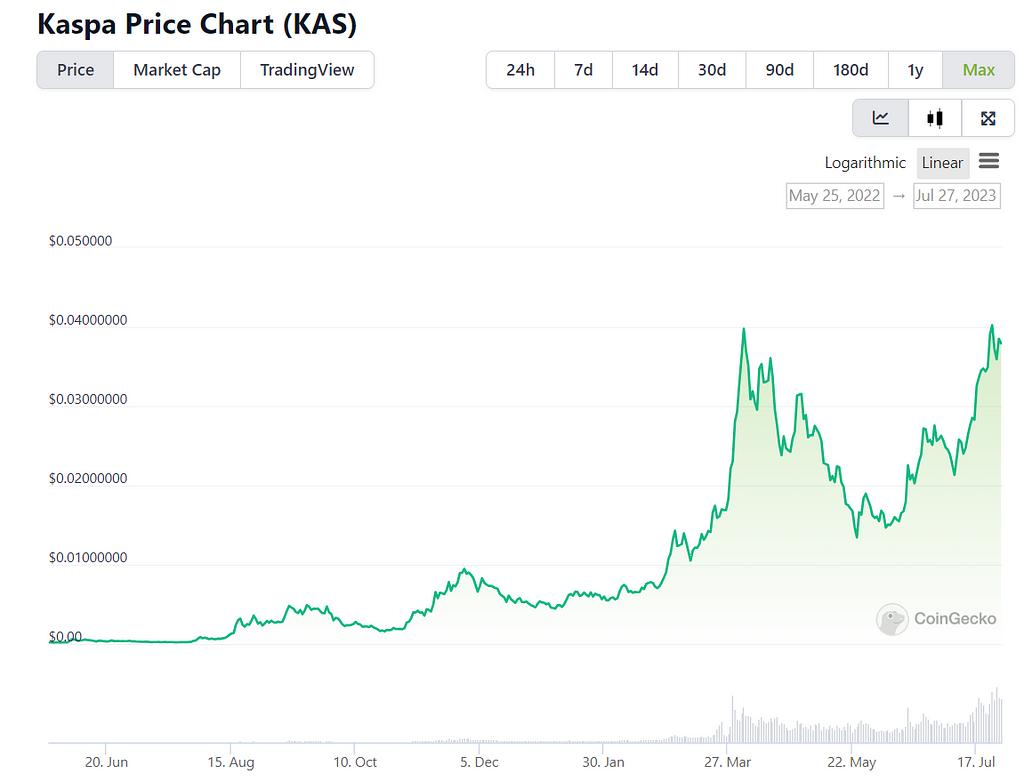
1. Team
Kaspa's team has a certain reputation. The founder Yonatan Sompolinsky is now a postdoctoral fellow at Harvard University, and his research direction is transaction sequencing and MEV. As early as 2013, he conceived the GHOST protocol with his doctoral supervisor at the time, and related papers were cited in the white paper of Ethereum.
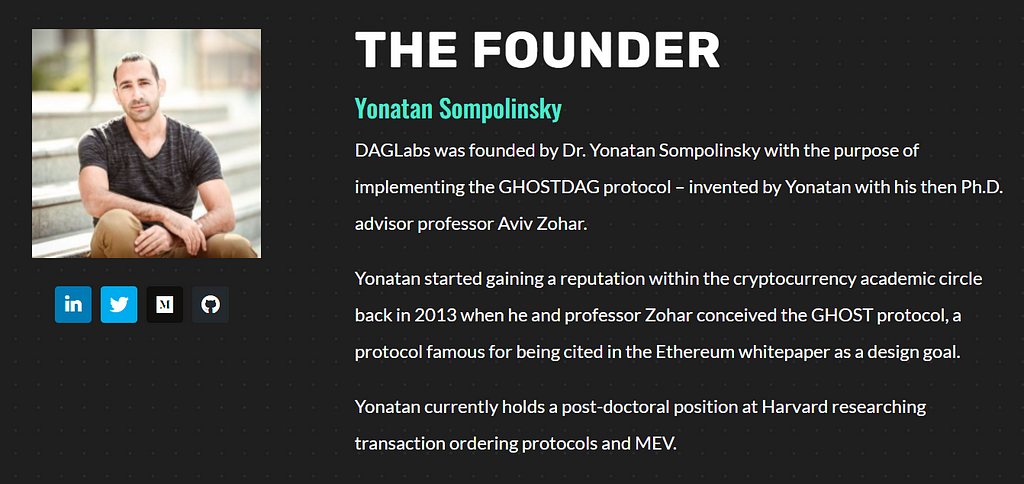
Source: Kaspa official website
Here are some quotes from the Ethereum white paper:
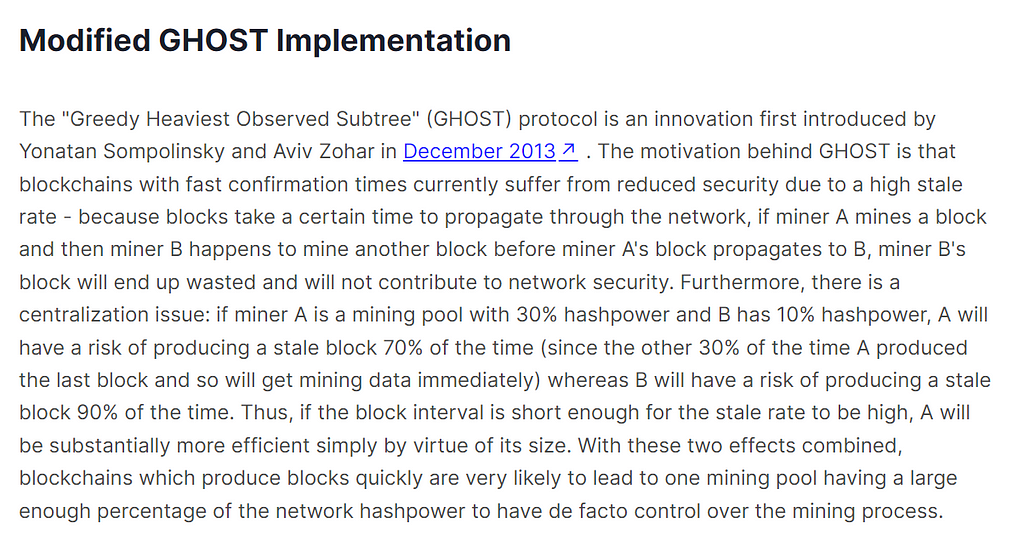
Source: Ethereum Whitepaper
In addition to the founder, there are 5 core developers. Michael Sutton studies parallel algorithms and distributed systems. Shai Wyborski is one of the authors of the GHOSTDAG paper, working on classical and quantum cryptography. Mike Zak and Ori Newman study distributed systems development. Elichai Turkel is an applied cryptographer and blockchain high-performance developer.
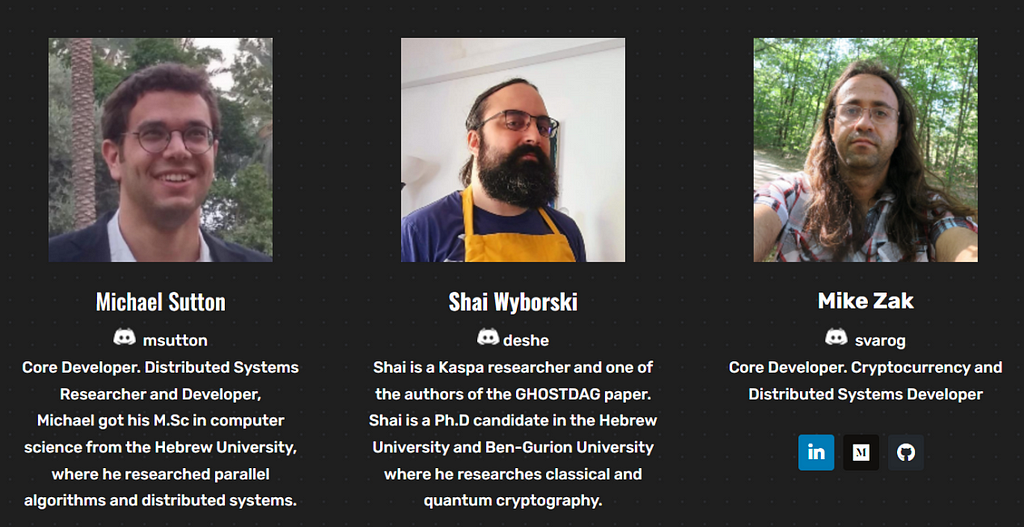

Source: Kaspa official website
2. Technical principle
The current technical principle of kaspa is mainly explained in its paper "PHANTOM GHOSTDAG: A Scalable Generalization of Nakamoto Consensus" published in 2021.
Bitcoin is essentially an open and anonymous network of nodes that jointly maintain a public transaction ledger. The ledger adopts the "longest chain" principle to realize the interconnection of honest blocks and protect the security of the network. This design makes the throughput of the network artificially suppressed, and the scalability of the protocol is low. Currently, Bitcoin blocks are produced every 10 minutes, with 3–7 transactions per second.
Structural Model: Directed Acyclic Graph
Kaspa proposed the PHANTOM protocol, a proof-of-work-based permissionless ledger protocol that generalizes the blockchain defined by Satoshi Nakamoto to a directed acyclic graph (blockDAG). PHANTOM can refer to multiple previous blocks, provide a total ordering of all blocks and transactions, and output a consistent set of accepted transactions.
PHANTOM includes a parameter k that is used to control the tolerance of the protocol to blocks created at the same time, which can be set to accommodate higher throughput. When k=0, it means that there is no fork, which is the single-chain and longest-chain structure of Bitcoin.
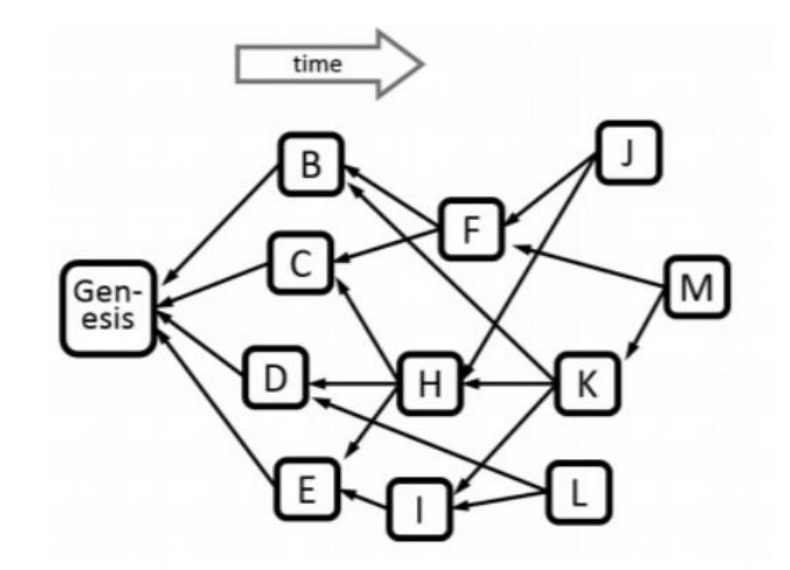
Source: "PHANTOM GHOSTDAG: A Scalable Generalization of Nakamoto Consensus"
Let's first understand several different blocks in DAG, and we will need to use the corresponding concepts in the examples below. In the above figure, block H is taken as an example:
past(H)={Genesis, C, D, E} — — H is created before directly or indirectly pointing to the past block of H;
future(H)={J,K,M} — — After H is created, it directly or indirectly points to the future block of H;
anticone(H)={B,F,I,L} — — Blocks other than past (H) and future (H), which have no direct or indirect relationship with H;
tips(G)={J,L,M} — — Leaf blocks or end blocks that will be block header references for new blocks.
Identify honest and malicious blocks
PHANTOM solves the problem of identifying honest blocks and malicious blocks. Malicious attacks have a characteristic: the connectivity between blocks generated by malicious nodes and blocks generated by honest nodes is low, while the connectivity between blocks generated by honest nodes will be high.
The criterion for judging is the parameter K value mentioned above. For a specific block X, if the intersection number of anticone(X) and the honest block is higher than the k value, it means that the connectivity between the X block and the honest block is low, and X will be judged as an attack block; otherwise, it means that X and the honest block The connectivity between X is considered to be an honest block.
The figure below is a judgment on honest blocks and attack blocks. The K value here is 3. After checking, the blue part is the honest block, and the red part is the attack block.
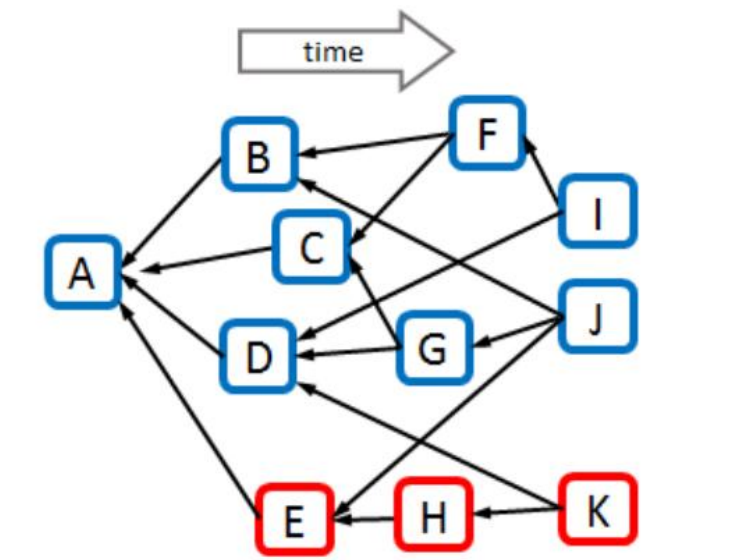
Source: "PHANTOM GHOSTDAG: A Scalable Generalization of Nakamoto Consensus"
linear sort
In order to solve the double spending problem, the project team used the GHOSTDAG protocol. The principle is to score each block according to its connectivity (the number of elements in the past block set), select the block with the largest total score to form the main chain, and the main chain will form the initial subset. The remaining blocks will be voted in sequence according to the order of the main chain. The entire network will vote according to the trend of connectivity from high to low.
The figure below shows how GHOSTDAG completes the sorting process when the parameter K=3. The small circle on the X side of each block represents its score, which is the number of blue blocks in the DAG in the past.
Step 1 , starting from the M block with the highest score, select K, H, D and the Genesis Block in turn, and mark them with blue shading and black border, which forms the initial subset. Access block D, the past block of D has only the Genesis Block.
Step 2 , visit block H, the past blocks of H include C, D, E, after using the aforementioned identification method for honest blocks and attack blocks, C, D, E belong to the honest block, and join the subset, Marked with a blue border.
Step 3 , visit block K, the past blocks of K include H and I, all of which belong to honest blocks after identification, marked as blue borders.
Step 4 , visit block M, M's past blocks include K, F, K belongs to the honest block, join the subset, marked with a blue border.
Step 5 , block V is a virtual block, and the past of this block is equal to the entire current DAG.
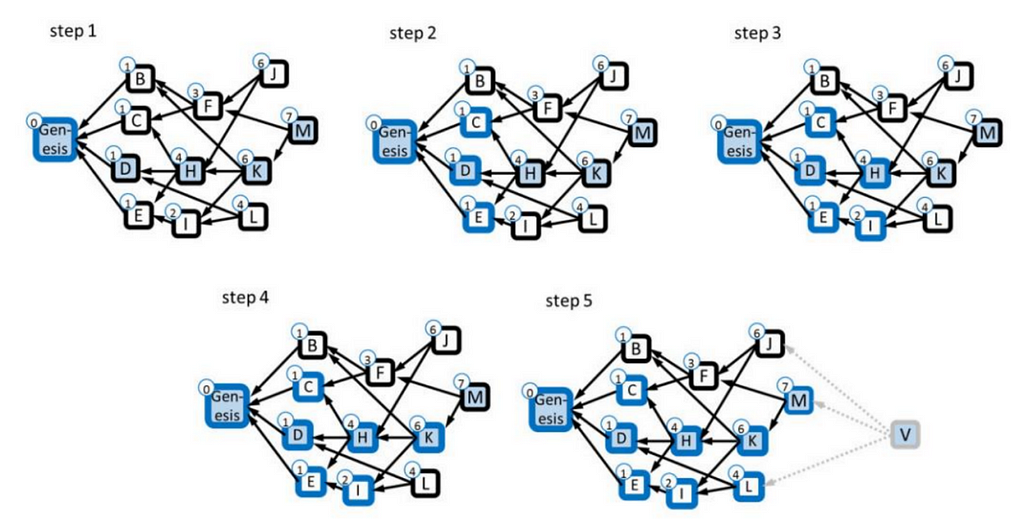
Source: "PHANTOM GHOSTDAG: A Scalable Generalization of Nakamoto Consensus"
So far, Kaspa has completed the discussion of the new consensus architecture and used it in practice. The official website shows the visual production process of DAG:

Source: Kaspa official website
3. Computing power
The KAS mining algorithm is kHeavyHash, which supports GPU single mining or dual mining with ETHW and ETC, and supports some FPGA and ASIC mining machines.
According to the official blockchain explorer, Kaspa has a hashrate of 2.6–2.7 PH/s. According to Mining Pool data, Kaspa's computing power ranks around 30th, after BCH, BSV, and DASH, and before DOGE, LTC.
Kaspa's computing power shows a continuous growth trend. In October 2022, December 2022, February 2023, and July 2023, there will be 4 significant increases in computing power. In March this year, some mining machine manufacturers launched professional mining machines to improve the mining efficiency of miners.
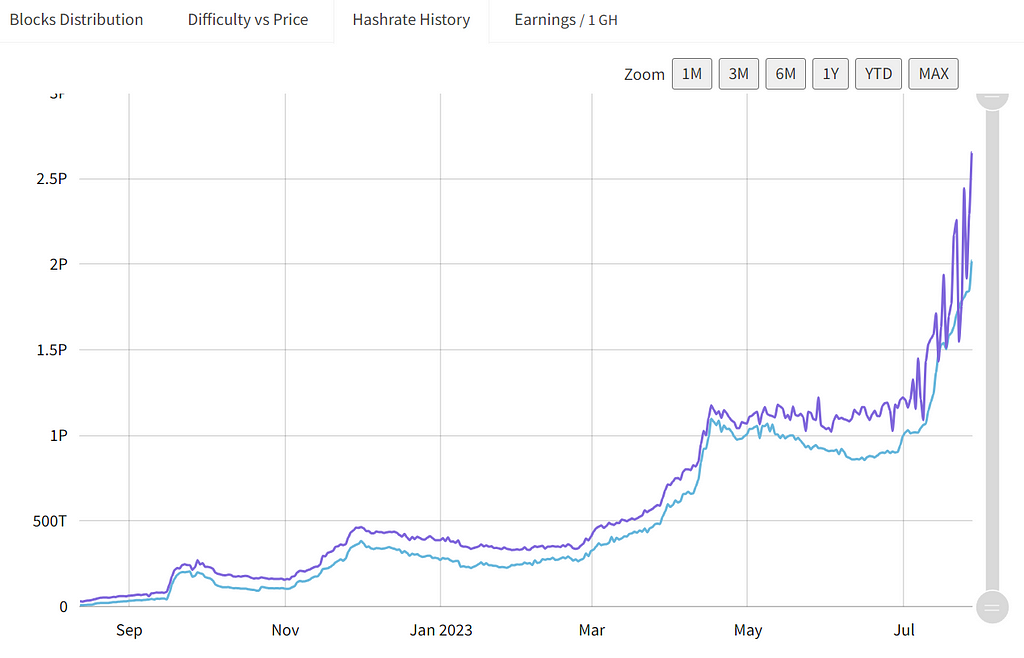
Source: miningpoolstats
From the perspective of computing power distribution, the concentration of computing power is not too high. In the latest 999 blocks, the output of the top five mining pools accounted for 37.1%; more than 56.7% of the blockchain was produced by unmarked addresses.
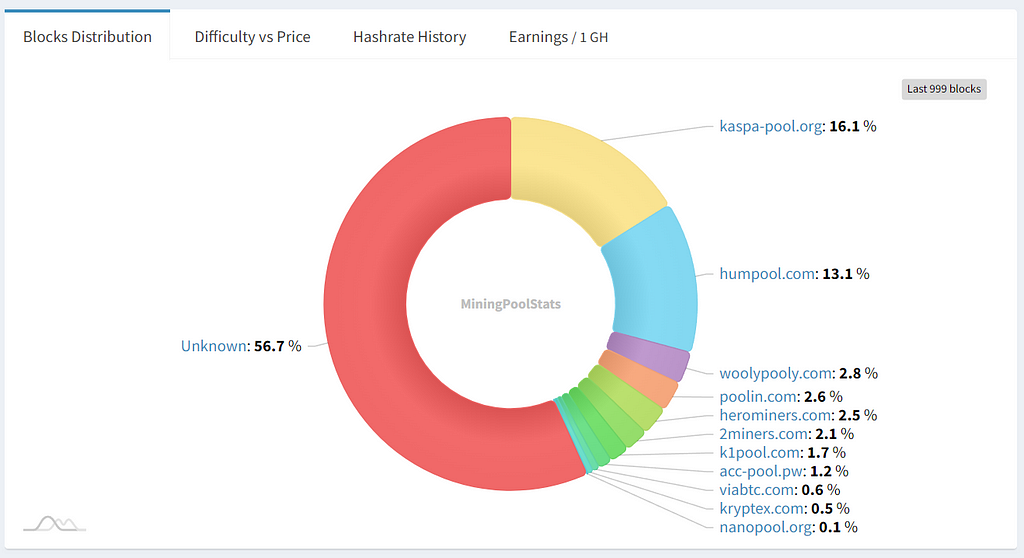
Source: miningpoolstats
4. Token Economic Model
Token distribution
Launched in November 2021, KAS has no pre-mining, zero pre-sale, and no token distribution; the total supply is 28.7 billion, the current circulation is 19.8 billion, accounting for 69% of the circulation, the market value is 750 million US dollars, and the FDV is 1.08 billion Dollar.
token release
According to the emission plan, KAS reduces the output in a given way every month, so that the output can be reduced by half every year. The following figure is a schematic diagram of the release. It can be seen that there was a high release rate in the early stage, and early miners accumulated a large amount of chips. The specific release date table can be queried on the official website (https://kaspa.org/wp-content/uploads/2022/09/KASPA-EMISSION-SCHEDULE.pdf).
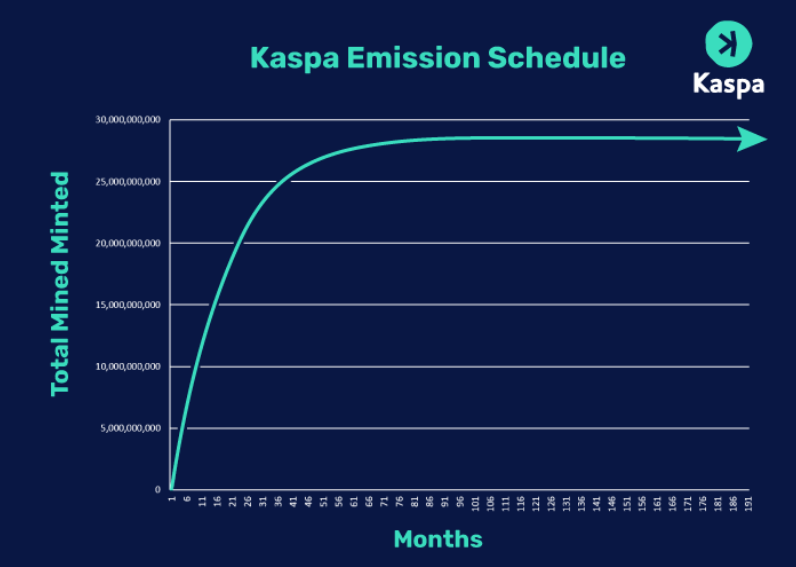
According to the token emission table, the monthly emission and release value of KAS tokens from July 2023 to June 2024 are calculated, as shown in the table below. If calculated according to the price of 0.037, in July 2023, KAS will emit tokens worth 19 million US dollars, and then gradually decrease; by June 2024, tokens worth about 10 million US dollars will be emitted.
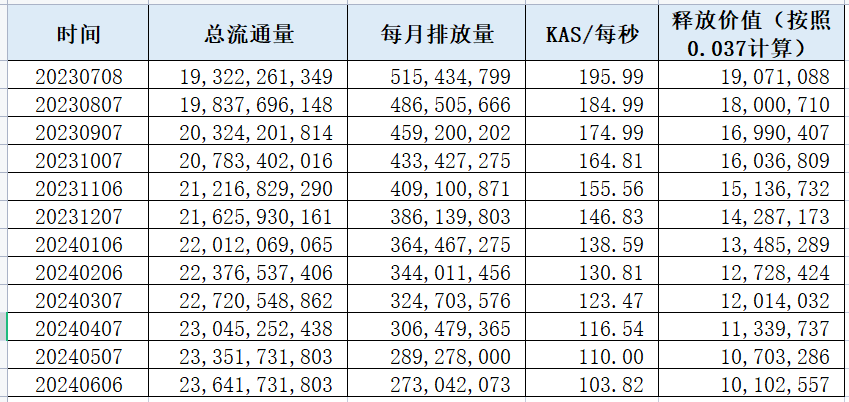
Source: Kaspa official website , LD Capital
According to f2pool data, Kaspa's 24-hour output value is currently the fourth place, after Bitcoin, Dogecoin and Litecoin, and higher than ETC and BCH.
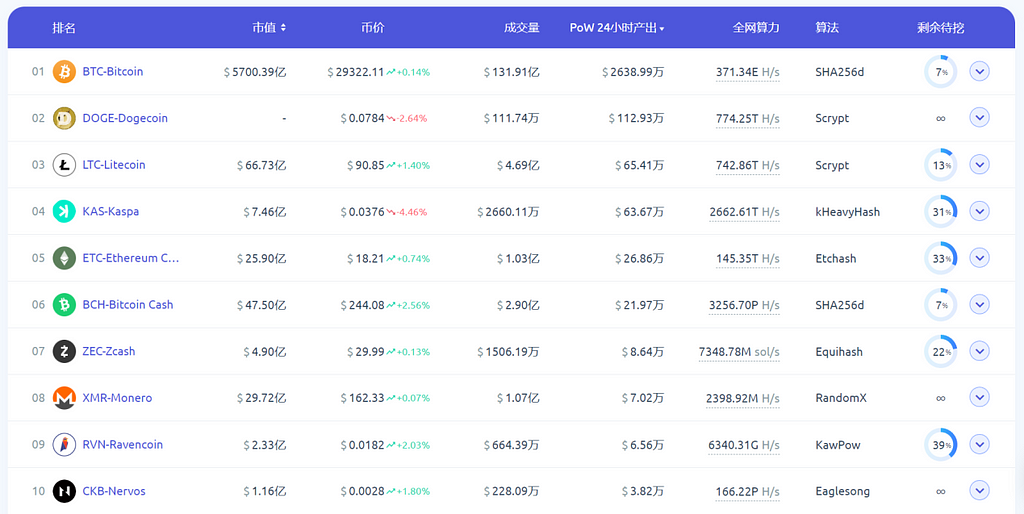
Source: f2pool
Positions
There are 267,000 addresses holding 1 or more KAS. The concentration of tokens is also relatively high. The top 10 addresses hold 17.299% of the tokens, mainly exchange wallets; the top 100 addresses hold 26.13%; the top 1000 addresses hold 61.35%.
Judging from the flow of tokens, in the past 30 days, addresses holding 100-10K tokens are in the process of lightening outflows, and addresses with 0-100 tokens and more than 10k tokens are in the process of inflowing. In the past 7 days, the addresses holding 100–10K, and the Humpback addresses holding 100m to 1b are in the outflow of lighten up, and the other addresses are in the inflow.
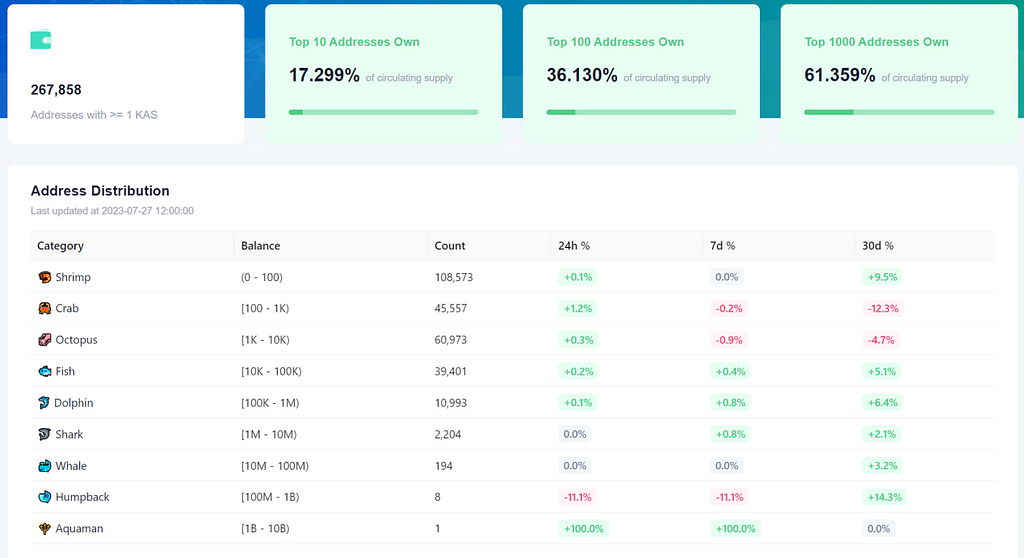
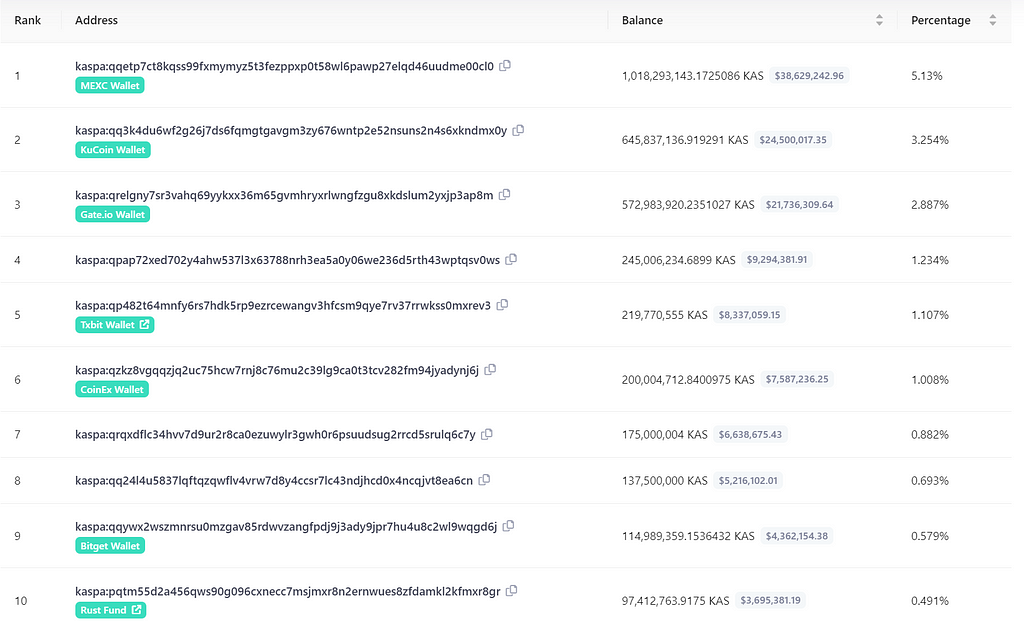
Source: kaspa blockchain explorer
5. Current progress and development plan
The official website discloses some important progress and recent development plans since 2023.
completed
In February 2023, Michael Sutton, the core developer of the project, published a paper on DagKnight Consensus, an evolution of GHOSTDAG, which could theoretically lay the foundation for faster transactions and confirmation times.
We are tested
Rewrite the code using the Rust programming language:
Currently, Kaspa is written in the GoLang programming language. Michael Sutton rewrote the code using the Rust programming language, which will improve Kaspa's performance and transaction speed.
Mobile wallet development:
Users have a strong demand for high-performance mobile wallets, and the estimated development time will take 3–4 months.
Integrate Kaspa to use on Ledger:
Users are able to send and receive KAS using the hardware wallet Ledger.
Under research and development
Upgrade the consensus mechanism according to DagKnight Consensus to further increase the number of blocks per second and transactions per second:
Currently Kaspa produces 1 block per second, and the goal is to mention 32 blocks per second. The current testnet can reach 10 blocks per second.
Release project white paper:
There are several research papers around Kaspa's technology, but the project's official white paper has not yet been released and is being sorted out.
Improved archive nodes:
At present, Kaspa's standard nodes can only access transactions three days ago. By improving the archive nodes, more historical data can be retrieved.
development plan
Implement smart contracts and build ecology:
Kaspa hopes to implement smart contracts, Defi and Layer 2 applications on its public chain, and establish a corresponding ecosystem.
The development and deployment of smart contracts is the most important factor for its further development. If smart contracts can be deployed smoothly in a timely manner and an active ecology is established, there is still room for Kaspa's market value to rise further. However, if the deployment of smart contracts is not smooth and the ecology fails to develop, there will be obvious bottlenecks in future development.
6. Summary
The project team has strong technical strength and a good development foundation. A new blockchain model is proposed to try a new development direction. In the early days, the computing power transferred from Ethereum was obtained, and the computing power continued to increase.
The market value is relatively high and has risen more than a hundred times. At present, KAS has a market value of 750 million US dollars, ranking around 60th, and the market has already fully valued the technical team and computing power growth. Future growth requires stronger expectations to support it.
The potential selling pressure of tokens is relatively large. Early miners held a large number of low-priced chips, and they also had daily continuous output. If they sold, it would cause a greater price impact.







